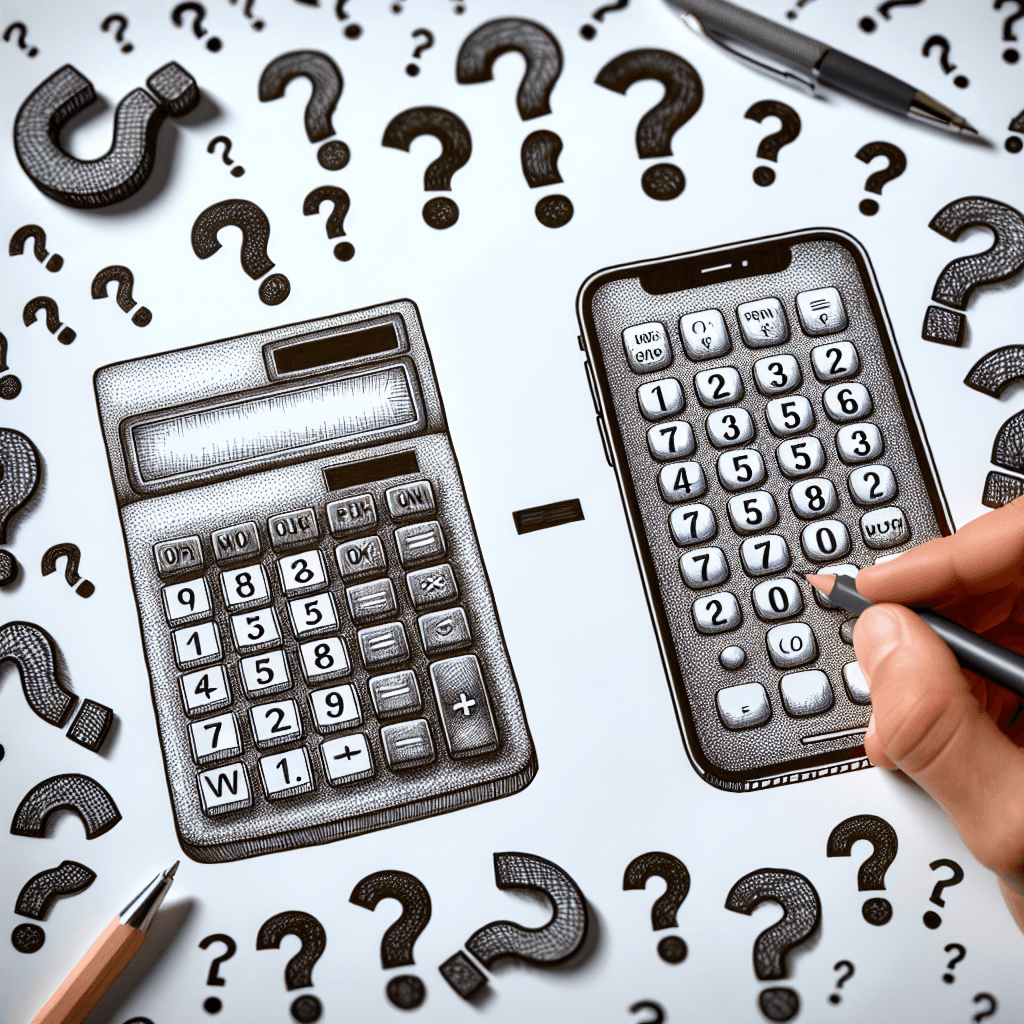Why are the numbers on a calculator and a phone keypad arranged differently
It’s not a random design choice that your phone and calculator keypads are opposites; one was engineered for speed, and the other was intentionally designed to slow you down.


Too Long; Didn't Read
TLDR: Calculator keypads come from mechanical adding machines, placing common numbers at the bottom for speed. Phone keypads were a new design found to be more intuitive for the public and to prevent dialing too quickly for early electronic phone switches.
A Tale of Two Keypads: Why Are the Numbers on a Calculator and a Phone Keypad Arranged Differently?
Have you ever picked up a calculator right after texting on your phone and felt a momentary glitch in your brain? You reach for the '1' at the top, only to find the '7' staring back at you. This small but universal experience raises a fascinating question: Why are the numbers on a calculator and a phone keypad arranged in opposite ways? It’s not an accident or an oversight. This design difference is a deliberate choice rooted in history, human psychology, and the specific purpose each device was built to serve. This post will unravel the tale of these two keypads, explaining the distinct origins and reasoning that led to the layouts we use every day.
The Calculator Standard: Designed for Data Entry
The keypad layout you see on a calculator, with the 7-8-9 row at the top and the 1-2-3 row at the bottom, is the older of the two. Its design DNA can be traced back to its mechanical ancestors: the cash register and the adding machine.
This configuration, often called the "adding machine layout," was engineered for speed and efficiency for a very specific user: someone entering long strings of numbers all day, like an accountant or a bank teller. Research and experience showed that for frequent data entry, placing the most commonly used digits was crucial. The zero, a very frequent digit in finance, was given a large, prominent key at the bottom, easily accessible to the thumb.
When electronic calculators emerged, they simply adopted this pre-existing, industry-standard layout. It was already familiar to the professionals who were their primary market. The International Organization for Standardization (ISO) even formalized this layout for numeric keypads, solidifying its place in the world of data entry. In short, the calculator keypad is a tool optimized for professional speed.
The Phone Keypad: A Deliberate Redesign for Accuracy
When Bell Labs began developing the first push-button telephone in the late 1950s, they had a decision to make. Should they adopt the established calculator layout? To find the best answer, they conducted extensive human factors research.
A 1960 Bell Labs technical memorandum, "Human Factors Engineering Studies of the Design and Use of Pushbutton Telephone Sets," reveals their process. They tested multiple layouts, including:
- The calculator layout
- Various circular and arced arrangements
- Two rows of five numbers
- The 1-2-3 top-row layout we know today
Their findings were surprising. While the calculator layout was fastest for experienced users, the top-to-bottom arrangement (1-2-3 at the top) was more intuitive and resulted in fewer errors for the average person. The engineers theorized that this layout was more familiar because it matches the way we read in Western cultures—left to right, top to bottom.
The primary concern for Bell Labs was not speed, but accuracy. A misdialed number was a significant problem, and they wanted a system that was as foolproof as possible for a public unfamiliar with keypads. They deliberately chose the slightly slower but more accurate layout to prevent user error.
Legacy and Muscle Memory: Why Two Standards Endure
Today, we live with both standards, and our brains have largely adapted to switching between them. The reason these two different layouts persist comes down to two powerful forces: legacy and muscle memory.
- For Calculators: The world of finance, science, and engineering is built on the adding machine layout. Changing the keypad on calculators and computer numeric pads would disrupt the workflow of millions of professionals whose fingers have been trained for decades. Productivity would plummet as people were forced to unlearn years of muscle memory.
- For Phones: The "phone layout" was standardized by the International Telecommunication Union (ITU) and has been used on trillions of devices worldwide. It is the first keypad most people ever learn. Changing it now would be unthinkable, causing confusion for billions of users.
Conclusion
The difference between a calculator and a phone keypad isn't a flaw; it's a brilliant example of user-centered design. The calculator's layout is a holdover from a mechanical era, perfected for the speed required by data-entry professionals. The phone's layout is a product of careful research, intentionally designed for the accuracy and intuition needed by the general public. Each layout is perfectly suited for its original task. So, the next time you feel that brief moment of confusion switching between devices, you can appreciate the hidden history and thoughtful engineering behind the numbers at your fingertips.


